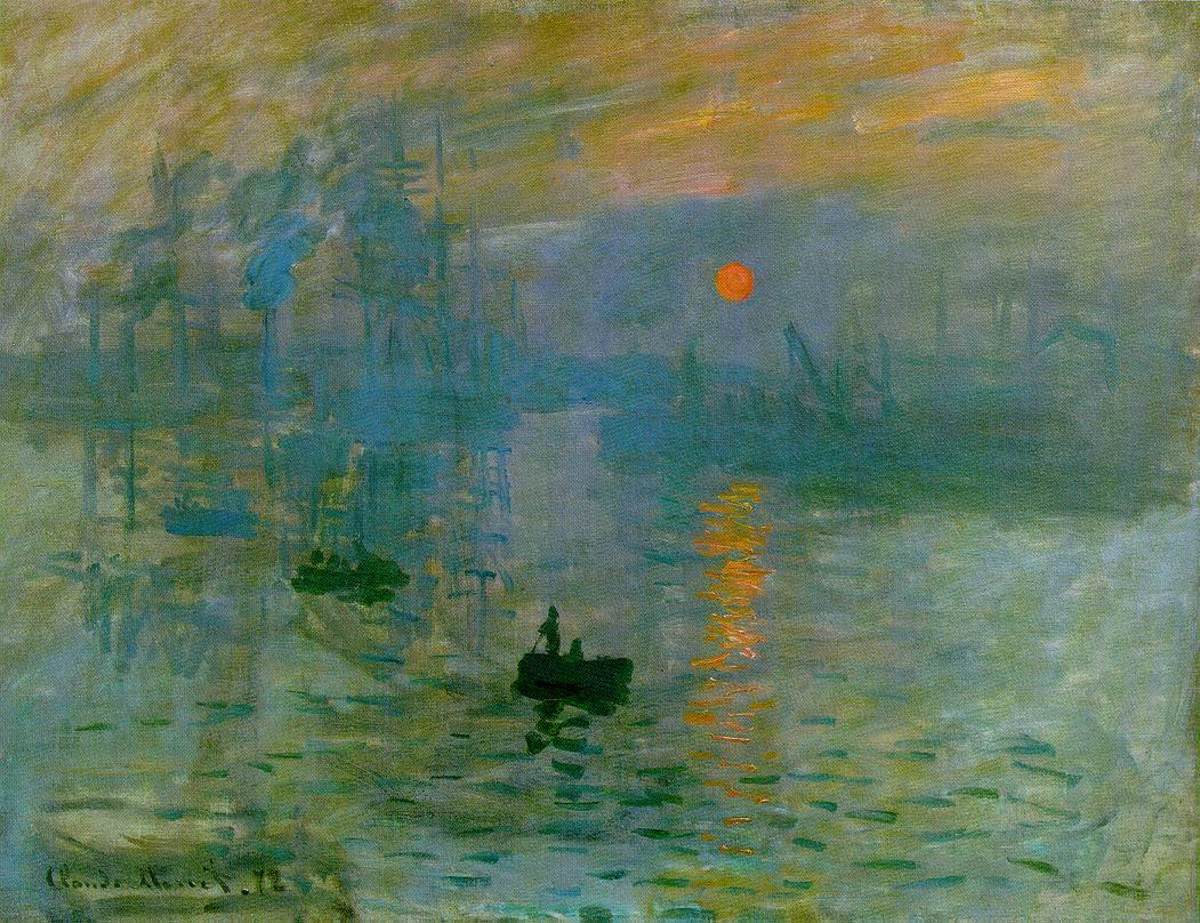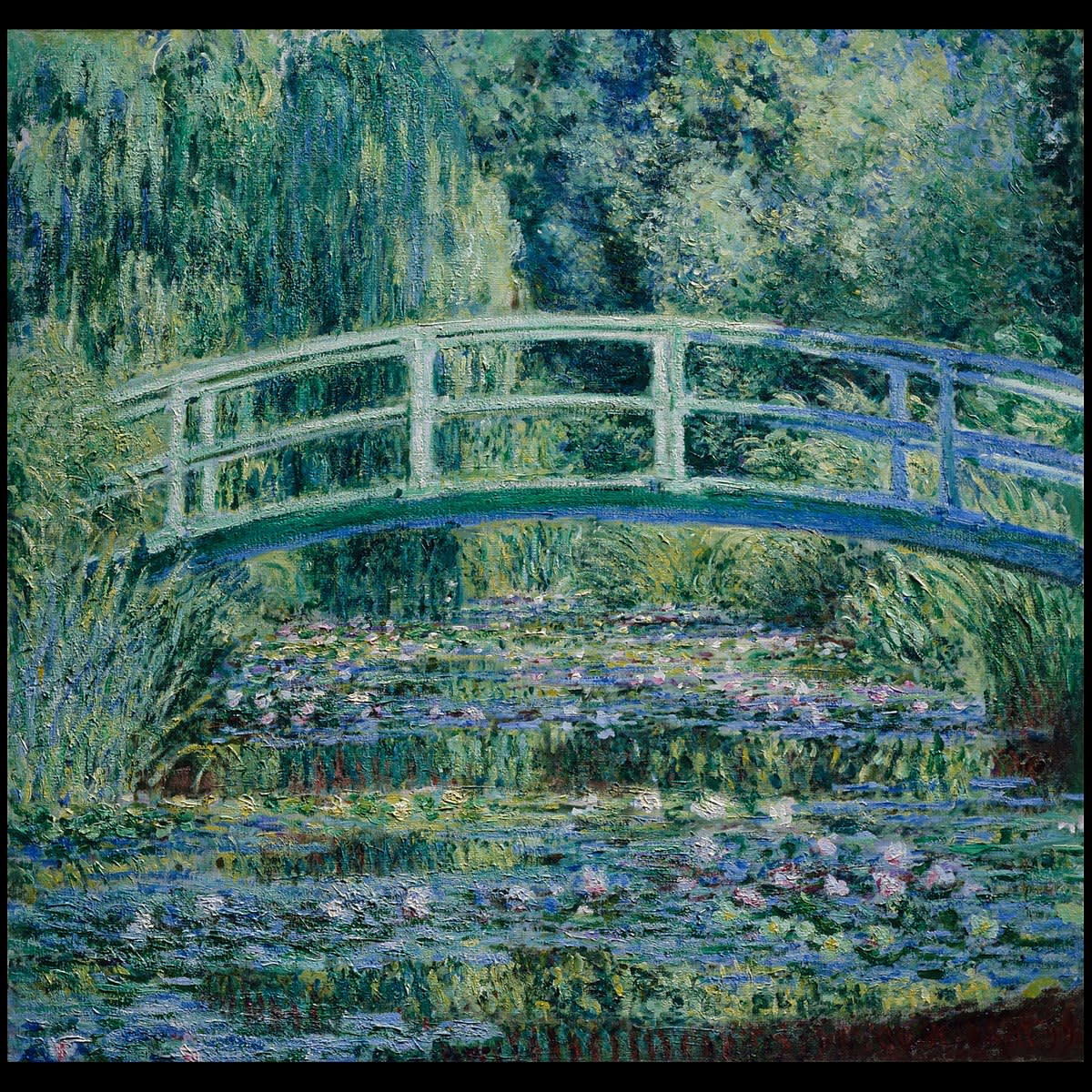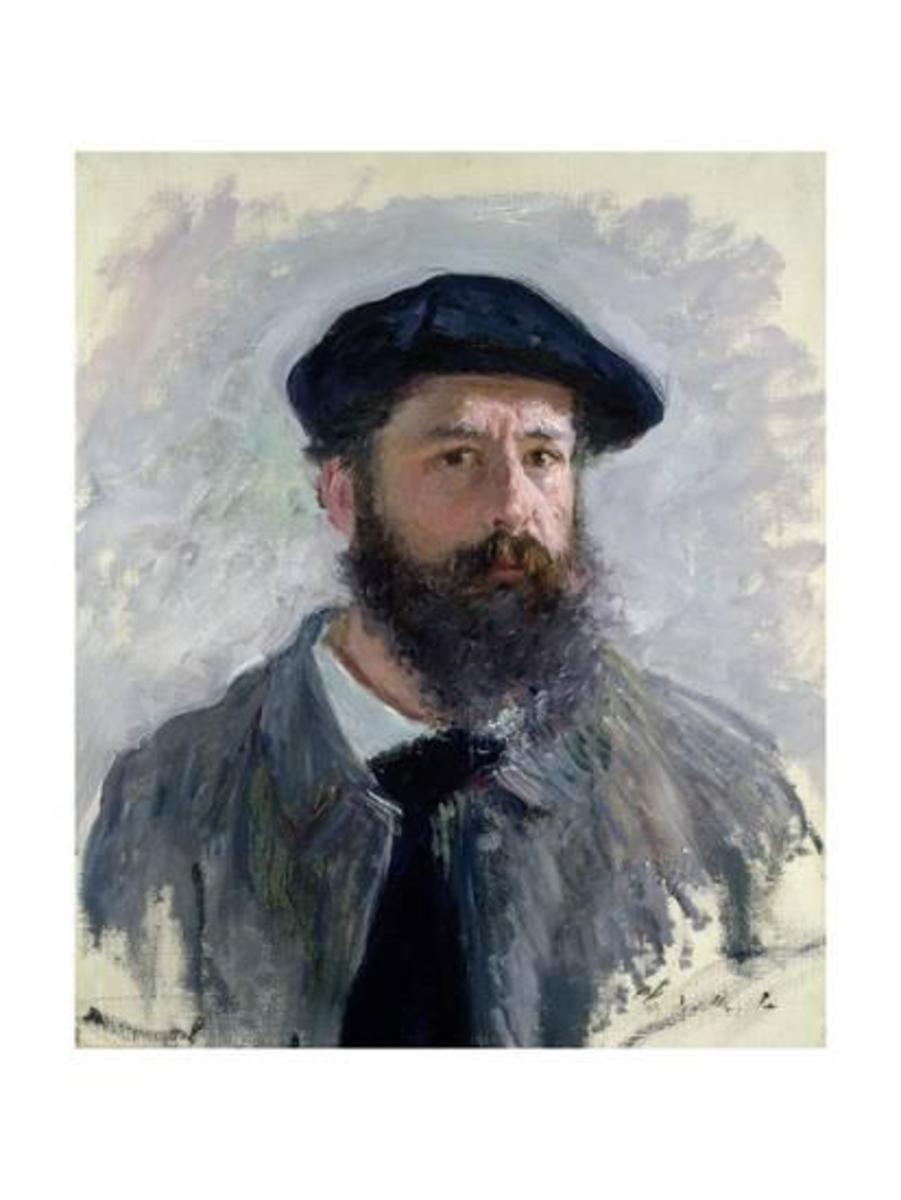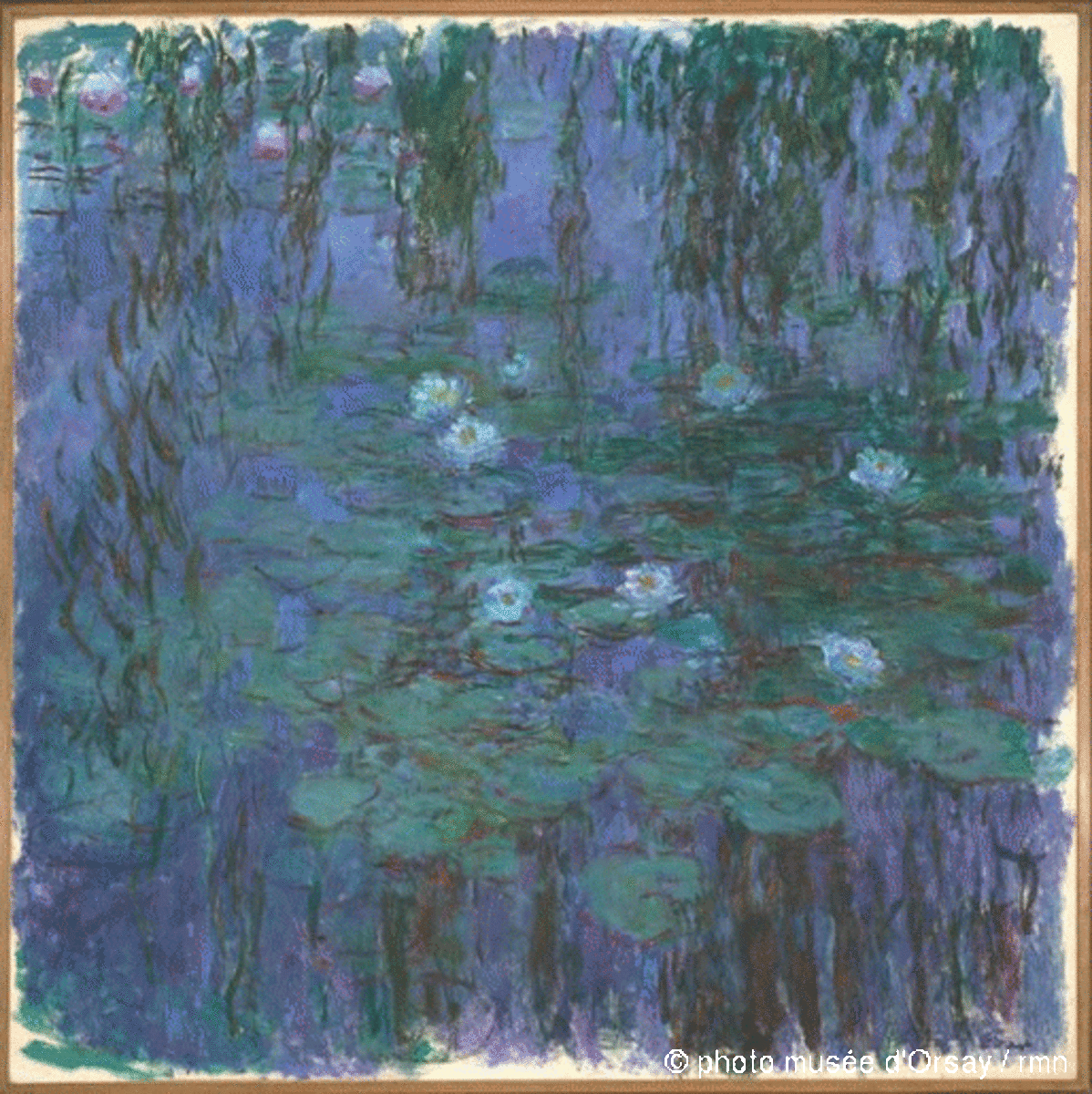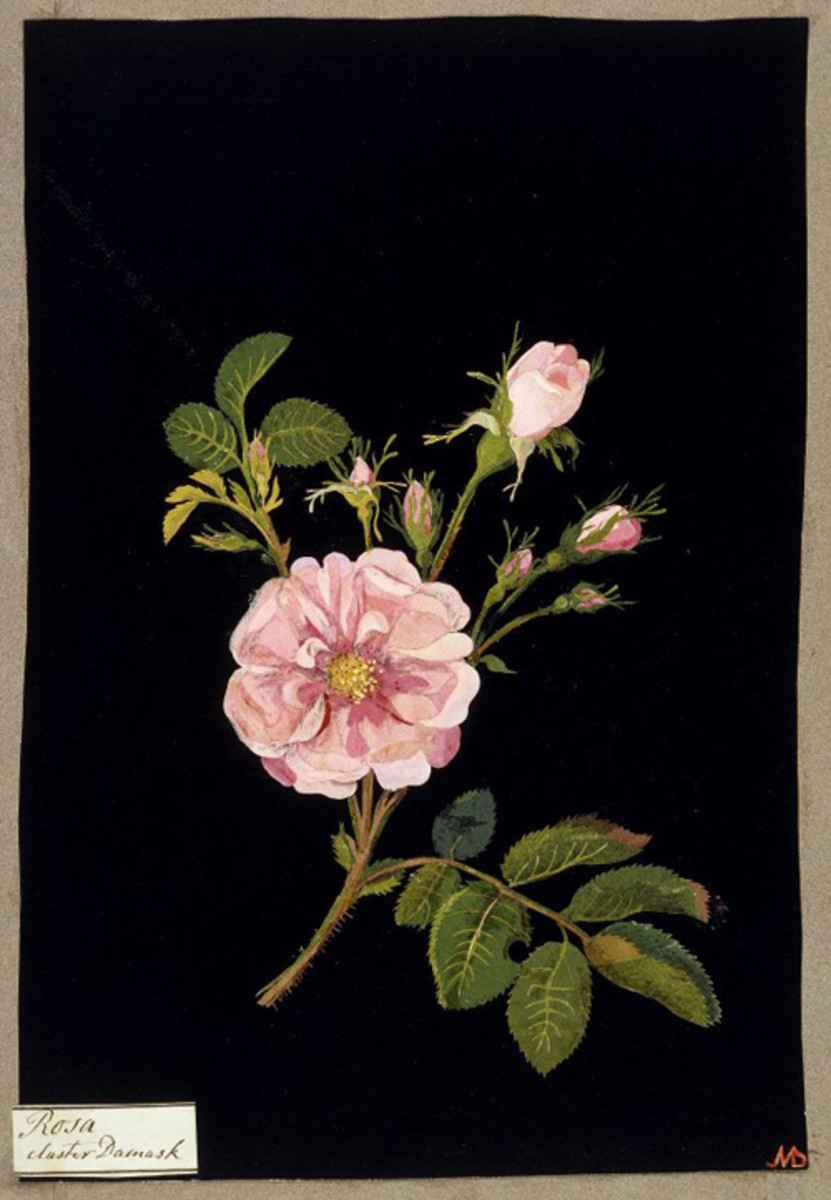Life Portraits of 19th Century European Artists
Impressionism
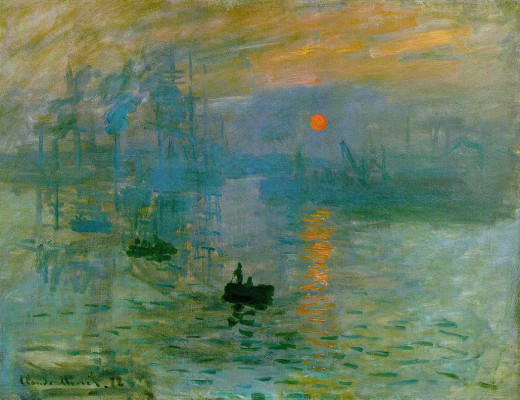
Claude Monet
Claude Monet (1840-1926) Impressionist. Born in Paris. Liked gardening and caricature. Studied under Jacques Francois Oshard. Went to Acadamie Swisse. Went to Algeria in the military. He fled from the war to England. Married Camille don Seleux. In 1870, had a son. Rigatta at Rejan-twei (1872, Dorsay) has a lot of blue. No traditional perspective, with reflections in the water. He met an art dealer, then had work in the first Impressionist exhibition in 1874, a total of 8 shows, which included works by Cezanne and Renoir, among others. Impression: Sunrise…this defined impressionism and was on display there. Painted mostly outdoors. Luncheon on the Grass (Pushkin Museum, Moscow), oil on canvas. 3D was important to him for shading. Went to Venice in 1875. La Granoulire-Was similar to Renoir. Labon Bach-Critics liked, defenders did not. This work appears to be influenced by Franz Halls. Stephane Mallarme (1842-1898) was a French poet and professor, who translated the Raven by Edgar Allen Poe and Monet painted him in 1876. Windmills at Zandame (1878) had large brushstrokes. Camille Monet on her Deathbed (1879). Break-up of the Ice (1880) is like a world devoid of life. Sunflowers (1881) was an example of a still life, which is what he did when there was bad weather. In the 1890’s, Monet’s work had a decisive change. The Haystack (1891)-He painted several versions, each catching a certain moment. One of these was compared to late Rembrandt. 15 examples were exhibited in 1891. Painted several examples of Rouen Cathedral.
Edouard Manet
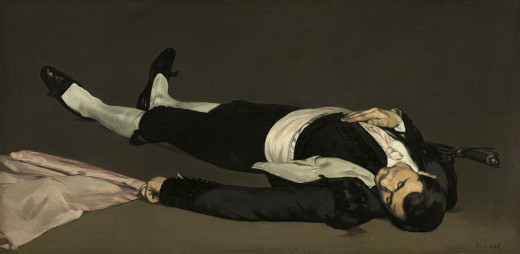
Edouard Manet & others in his Circle
Edouard Manet (1832-1883) was an Espanolist, which was part of a fad where the artist liked Spain. Was friends w/Cezanne in school. Was eccentric and wanted to make fun of the public. Painted Luncheon on the Grass. Sketch for Olympia was in Red Chalk, which was exhibited in 1865 and it also had an etching. The Dead Toreador (1864) had photographic realty. Execution of Maximillian (1867) had 3 versions. The River (1867) was the first to be considered semi-impressionist. The Balcony (1868-1869) may have been influenced by Goya. Died by accidental asphyxiation.
Berthe Morisot (1841-1895) was intelligent and a granddaughter of Fragonard. Chocarne taught her until 19, then worked with Carot. She met other artists. She was in a work by Manet. She was married to Eugene Manet, the artist’s brother. Examples are: Study (1864, oil on canvas) and Marine Harbor at Moriant (1869, oil on canvas). Painted Madame Morriseau and Madame Pontelon (1869-1870). Painted Hide and Seek (1873, oil on canvas). The Cradle (1872-1873) was in the show of 1874. She often painted woman & child. Was influenced by Renoir after Manet’s death. Renoir became the guardian of her daughter after she died.
Eva Gonzales (1849-1883) was a French Impressionist painter. She was the only one that Edouard Manet allowed to name him teacher. Married Henri Guérard, Manet’s engraver.
Seurat
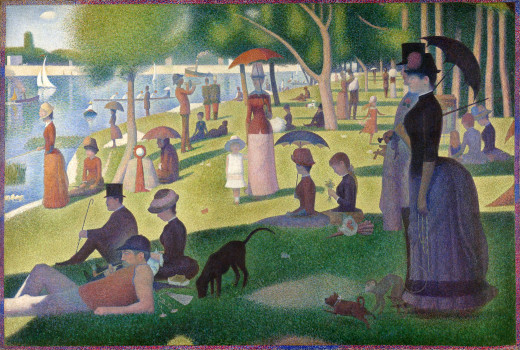
Georges Seurat
Georges Seurat (1859-1891) studied Delacroix. He learned of and followed the divisionism technique. Probably the most popular of his works was A Sunday Afternoon on the Island of La Grande Jatte, which used small dots (stipple). It was an expressive composition. He was friends with Camille Pissarro’s son.
Toulouse-Lautrec
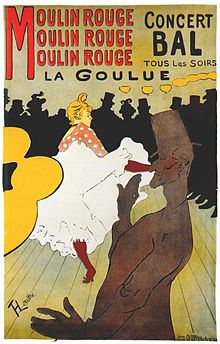
Henri de Toulouse-Lautrec
Henri de Toulouse-Lautrec (1864-1901)- Roger Mary said that Lautrec was the leader of pictorial realism. His mother was protective and smothered him, then tried to control him. Pastel became a natural medium for him. He liked to paint on cardboard. It appears that he was obsessed with red hair. His works were striking in reality, and some work was similar to Edgar Degas. Some of his illustrations were in magazines or as posters to advertise. He considered himself like Cerano de Berjac. In his portrait of Vincent Van Gogh (1887), he used crosshatch and a lot of blue. La Goulue Entering the Moulin Rouge (1891, oil on board) has a profile of a bird of prey and she is depicted like a vampire. She would drink people’s alcohol and was vulgar. She would do the can-can. She was the queen of the dancers. At the Moulin Rouge, odd people would perform. Artistide Bruant (1892) depicts this man who would insult his audience and was like Oscar Wilde. La Viste: Re de Mulin (oil) this shocking work depicts prostitutes being inspected. This proves how many felt that Lautrec’s works were vulgar and offensive. Two Friends (1894, oil) is another popular work. This is cartoonish. It shows vice as unattractive and the subjects look bored. He painted a picture of Oscar Wilde, which was like a caricature. Paul Leclerq (1897, oil on canvas) compared to Whistler’s work and Japanese prints. The face & hands are detailed, but the background is sketchy. At the end of his life, he had a stroke and became immobile and was comatose. “The old fool,” were his last words, referring to his father. His father did not walk after the hearse, he took the reins, then the mourners had to run to keep up. The father disagreed with his wife on where to bury him. But his mother won, so he was buried in the church yard.
Other, Lesser-known Artists
Johan Jongkind (1819-1891) Born in Holland, worked in France. Landscape artist.
Marcellin Desboutin (1823-1902) Marcelin was a writer, painter, and engraver. Was Bohemian. He is in the Absinthe Drinker by Edgar Degas. Monet painted him in 1875.
Henri Fantin-Latour (1836-1904) Married a colonel in the Russian army after waiting for her for 8 years. Was a Realist.
Theodore Duret (1838-1927) was a politician, writer, art critic. He supported impressionism in 1867. Met artist Camille Pissarro in England.
Eugene Boudin (1824-1898) Pre-Impressionist. Like Claude Monet.
Alfred Sisley (1839-1899) was born in France and his parents were English. He was resigned to poverty. He finished the last 19 years of his life in one town. He was friends with Claude Monet. He was not a formula painter, so he used a variety of methods in his painting.
Frederic Bazille (1841-1870) Died in the Franco-Prussian War. Was part of the Zuaves infantry who went on dangerous missions. Was part of the only group that could have beards and had a colorful uniform. Was tall and slender, slightly charming and mad. He bought paintings for Claude Monet. Had money, then lost it.
Thomas Eakins (1844-1916) Was a realist/naturalist. Trained at the PA Museum of Fine Arts. Studied in the French Academy. Was influenced by Spanish painters. Painted the Gross Clinic (1875). In 1876, he joined the Philly Academy of Art.
Sources
My notes from Art History classes with some confirmations from Wikipedia, primarily for spelling.
This content is accurate and true to the best of the author’s knowledge and is not meant to substitute for formal and individualized advice from a qualified professional.
© 2020 Mark Richardson

